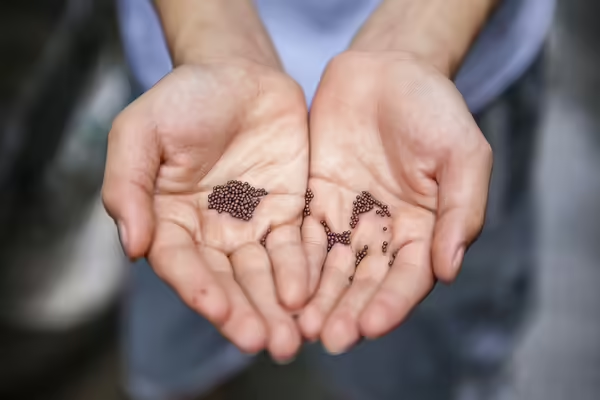
URBANA, Ill. — When planning a garden, seeds are an inexpensive investment when compared to buying plants. Gardeners have three basic seed selection choices: hybrid, open-pollinated, and heirloom seeds. What is the difference?
Hybrid seeds, also called F1 hybrids, are developed by plant breeders targeting specific characteristics like disease resistance, increased fruit production, or flower color. F1 hybrids are a result of crossing two plants with specific characteristics to create a third variety. If you’re looking for better storage life, increased production, or other plant characteristics, hybrid seed selection is the best choice.
When it comes to saving hybrid seeds from year to year, seed saved from a hybrid will not produce the same plant it came from, it will produce one of the parent plants. For this reason, hybrid seed must be purchased yearly.
Open-pollinated or true-to-type seeds are naturally created from other flowers or vegetables due to self- or cross-pollination. Cross-pollination is a result of wind, rain, or natural pollinators like bees, moths, birds, and bats. This type of seed can include field and sweet corn, pumpkins, small grains, and popcorn.
With self-pollination, the structure of the flower allows for fertilization before it opens. While open-pollinated varieties grow true-to-type each year, the seed is genetically diverse, meaning there can be a lot of variation in plants and yield. Since the beginning of agriculture, people have been selecting and saving seeds for qualities like flavor, heat or cold tolerance, growth habit, and uniformity. Examples include beans, broccoli, cabbage, carrots, onions, and peppers, to name a few.
Heirloom seeds are usually open-pollinated. The difference is that the seeds have been passed down from gardener to gardener for more than 50 years.
Most heirloom seeds are organically grown. The heirloom label or logo does not guarantee that the seeds are organic or that no chemicals were used during the cultivation of the seed. If this is a concern, select seeds with an organic label.
With a better understanding of the seed packet information, you can start selecting seeds for your garden with more confidence and an added measure of a successful season.
Let’s look at how this information is located on a seed packet. It’s important to note that not every seed packet has the same information in the same location.
Seed Packet Front
The front of the seed packet is where you will find information about the seeds in the package and the plant they will grow into.
- Name of the company
- Type of plant
- Variety of plant including genus and specific epithet
- Price and weight of seed (grams or ounces)
- Annual, light requirements, and sowing requirements
- Description of the plant seeds contained in the packet
- This logo indicated this seed is USDA Organic
- Image of plant
Seed Packet Back
The back of the seed packet is where specific information about the seed is contained. The information listed is important and should be followed for the best growth results.
- Additional detailed information about the plant, usage, locations, planting site choice (bed, container), and estimation of the total area seed will cover.
- Sowing instructions for starting seed inside or outside, successive sowing, and transplanting temperatures.
- Company name, address, and website. Additional information includes open pollination and untreated seed statements. Logos for Certified Organic and Non-GMO Verified.
- Lot Number, growing year seed was packaged for, and sell-by date.
- Plant Stake Information: Plant name, drawing of a seedling, days to emergence, seed depth, seed spacing, row spacing, thinning information, and planting date.
For more research-based information on choosing seed packets, connect with your local Illinois Extension county office at go.illinois.edu/ExtensionOffice.
Mary Fischer is a former Illinois Extension horticulture educator for Clay, Effingham, Fayette, and Jasper counties. Gardeners Corner is a quarterly newsletter from gardening experts around the state. Each issue highlights best practices that will make your houseplants, landscape, or garden shine in any season. Join the Gardener’s Corner email list at go.illinois.edu/GCsubscribe for direct access to timely tips.